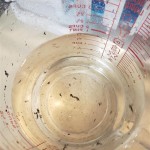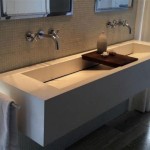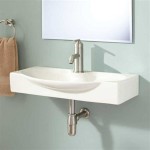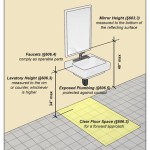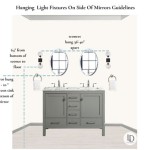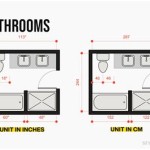How To Get Rid Of Black Mold On Bathroom Walls
Black mold, a type of fungus commonly found in damp environments, can be a persistent problem in bathrooms. Its presence not only affects the aesthetics of the space but also poses health risks, especially for individuals with allergies or respiratory issues. While removing black mold requires a systematic approach, with proper cleaning and preventive measures, you can effectively eradicate it and prevent its recurrence.
1. Identify and Assess the Mold
Before tackling black mold, accurately identify it. Look for dark, velvety patches, which are a telltale sign of mold growth. Carefully assess the extent of the infestation. If the mold has spread beyond the surface, you may consider professional help. For small areas, you can proceed with DIY solutions.
2. Prepare the Area
Before cleaning, ensure adequate ventilation. Open windows and doors to allow fresh air circulation. Protect yourself by wearing gloves, a mask, and safety goggles. Since mold spores can be airborne, cover furniture and other surfaces with plastic sheets to prevent contamination.
3. Clean the Mold
For most black mold infestations, a bleach solution is effective. Mix one cup of bleach with one gallon of water in a spray bottle. Apply the solution directly to the moldy area, allowing it to sit for 10-15 minutes. Scrub the area vigorously with a brush, then rinse thoroughly with clean water. Repeat the process if necessary.
Alternatively, you can use a commercial mold cleaner following the instructions on the product label. Always ensure proper ventilation and use the product in a well-ventilated area, wearing protective gear.
4. Dry the Affected Area
Thoroughly dry the cleaned area after removing the mold. Use a towel to wipe away excess moisture, and consider using a fan or dehumidifier to accelerate the drying process. Dampness is a breeding ground for mold, so ensuring complete dryness is crucial to prevent its return.
5. Address the Underlying Moisture Problem
Eradicating mold requires addressing the source of moisture. Identify and eliminate any leaks or drainage issues causing the dampness. Repair leaky pipes, replace damaged caulk around fixtures, and ensure proper ventilation in the bathroom. Consider installing an exhaust fan if one is not already present.
6. Prevent Mold Recurrence
After removing black mold, implement preventive measures to discourage its return. Maintain low humidity levels in the bathroom by using an exhaust fan during and after showers. Wipe down spills and leaks promptly. Regularly clean the shower and tub with a mold-resistant cleaner. Ensure adequate ventilation by opening windows or turning on a fan whenever possible.
7. Professional Help
If the black mold infestation is extensive or persistent, consider consulting a professional mold remediation specialist. They have the expertise and equipment to safely and effectively remove mold from your bathroom.
Remember, persistent black mold infestations can pose health risks. If you suspect a severe mold problem or are experiencing persistent symptoms such as allergies or respiratory issues, consult a medical professional for diagnosis and treatment.

How To Clean Black Spots In The Bathroom Family Handyman

How To Get Rid Of Mold In The Shower On Bathroom Walls Clorox

How To Get Rid Of Mold In Bathroom 2024 Tips From Puroclean

How To Remove Mold From Walls True Value

Black Mold In The Shower How To Clean It Kitchen With Matt

Black Mould Removal The Right Way

How To Get Rid Of Black Mould In Bathroom Helpful Advice Timberwise

The Ultimate Guide On How To Clean And Get Rid Of Mold Pro Housekeepers

Bathroom Mold Issues

Black Mould Removal The Right Way
Related Posts
